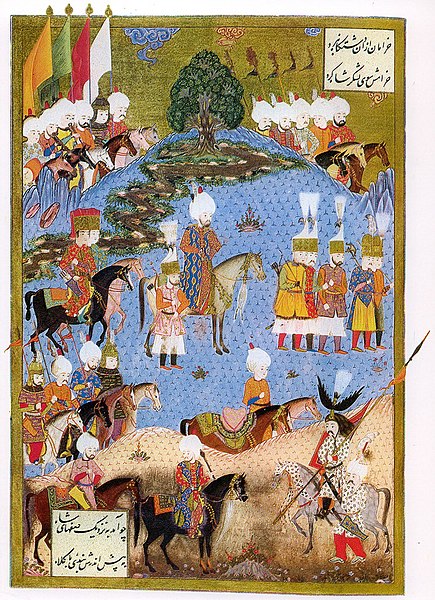The Khwarazmian or Khwarezmian Empire was a culturally Persianate, Sunni Muslim empire of Turkic mamluk origin. Khwarazmians ruled large parts of present-day Central Asia, Afghanistan, and Iran from 1077 to 1231; first as vassals of the Seljuk Empire and the Qara Khitai, and from circa 1190 as independent rulers up until the Mongol conquest in 1219–1221.
Coin minted under Atsiz, citing his Seljuk suzerain Ahmad Sanjar
Khwarazmshah Il-Arslan at his coronation, painting from the book Jami' al-Tawarikh (c. 1306–1314)
Mausoleum of Ala al-Din Tekish in Konye-Urgench (former Gurganj) in present-day Turkmenistan
Muhammad II's death, depicted in a 1430 manuscript of the Jami' al-tawarikh by Rashid-al-Din Hamadani
A Persianate society is a society that is based on or strongly influenced by the Persian language, culture, literature, art and/or identity.
Persian miniature from the Shahnameh of Shah Tahmasp: Rustam asleep, while his horse Rakhsh slays a lion, fol. 118r.
Girl With Mirror. Qajar dynasty art.
Great Mongol Shahnameh, 1330s, Bahram Gur killing a wolf, Harvard University Art Museum
The Ottoman Süleymanname (The Book of Suleyman) manuscript of Celebi, in Shirazi style with Persian Texts








